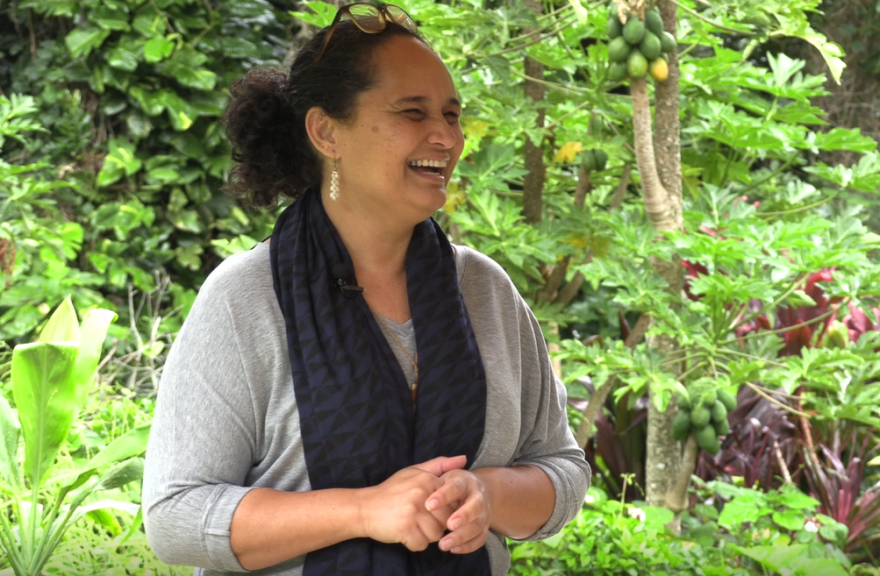Kanoa O’Connor grew up just down the road from Hoʻoulu ʻĀina.
“I remember when we were growing up, it was a real rough area,” he said. “And you didn’t really necessarily want to come up here so much.”
But since then, O’Connor said he’s seen the area change through the work of Hoʻoulu ʻĀina. He started as a volunteer 10 years ago and worked his way up to youth coordinator.
“I felt a lot of times that the ʻāina kind of part of being Hawaiian was missing a lot for me,” he said. “The positive transformation that’s happened on this land, I’m really hopeful when I look at the rest of the valley.”

He’s one of many community members who considers the 100 acres of land a puʻuhonua, or sanctuary. Hoʻoulu ʻĀina means to grow the land and to grow because of the land.
Puni Jackson, Hoʻoulu ʻĀina’s director, has been with the organization for about 15 years. She recently received a leadership award from the National Association of State Foresters.
“I see this as the place where community comes together in lots of different ways,” she said.
The nature preserve is part of the nonprofit Kōkua Kalihi Valley Comprehensive Family Services. In 2005, the nonprofit was granted a lease from the state Department of Land and Natural Resources to care for the land. And that lease has since been extended.
Kōkua Kalihi Valley is the only community health center in the country to have a large nature preserve as a place for healing.
Herbs to make traditional Hawaiian medicine grow at Hoʻoulu ʻĀina. And some doctors even recommend that their patients visit to start their own healing process.
“The land and the human is connected and related,” Jackson said. “The physical work that they’re doing to heal the land and bring vibration of abundance to the forest and to our food systems, they feel that in themselves, and that reciprocal healing is palpable.”
Hoʻoulu ʻĀina’s programs include food production, canoe carving and ʻāina-based education. They’re also working on a new project that would repurpose the invasive species they clear from the forest into products and goods.

They host thousands of volunteers, from keiki to kupuna, every year at their community workdays.
And they partner with community groups that regularly come to work on the land.
One of them is Honolulu Community College. Kahale Saito is a Native Hawaiian counselor at HCC. She’s brought hundreds of students to Hoʻoulu ʻĀina over the past 10 years.
Saito said she’s seen many of them learn from the ʻāina-based education and community service. She also joined their board about a year ago.
“It’s a way for them to restore their own ola, or their own life, into their own self,” she said. “And a majority of them go up there, and just after the first experience, they all feel like they’re at home.”
Jackson said the experiences that Hoʻoulu ʻĀina offers have been life changing for her and many others.
“People have that deep connection. Often people cry… or oftentimes people have that awakening like, ‘Oh I have this in my own backyard or my grandma used to use this plant to heal us when we weren’t feeling good,’” she said. “All of those stories of connection and humanness and remembering, that’s what the forest has to offer for us.”




